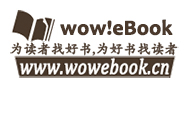
Paris and the Art of Transposition:Early Twentieth Century Sino-French Encounters (China Understandings Today)
by: Angie Chau (Author)
Publisher: University of Michigan Press
Publication Date: 2023/12/11
Language: English
Print Length: 226 pages
ISBN-10: 0472056514
ISBN-13: 9780472056514
Book Description
A brief stay in France was, for many Chinese workers and Chinese Communist Party leaders, a vital stepping stone for their careers during the cultural and political push to modeize China after World War I. For the Chinese students who went abroad specifically to study Weste art and literature, these trips meant something else entirely. Set against the backdrop of interwar Paris, Paris and the Art of Transposition uncovers previously marginalized archives to reveal the artistic strategies employed by Chinese artists and writers in the early twentieth-century transnational imaginary and to explain why Paris played such a central role in the global reception of mode Chinese literature and art. While previous studies of Chinese modeism have focused on how Weste modeist aesthetics were adapted or translated to the Chinese context, Angie Chau does the opposite by tuing to Paris in the Chinese imaginary and discussing the literary and visual artwork of five artists who moved between France and China:the painter Chang Yu, the poet Li Jinfa, the art critic Fu Lei, the painter Pan Yuliang, and the writer Xu Xu. Chau draws the idea of transposition from music theory where it refers to shifting music from one key or clef to another, or to adapting a song originally composed for one instrument to be played by another. Transposing transposition to the study of art and literature, Chau uses the term to describe a fluid and strategic art practice that depends on the tension between foreign and familiar, new and old, celebrating both novelty and recognition—a process that occurs when a text gets placed into a fresh context.
About the Author
A brief stay in France was, for many Chinese workers and Chinese Communist Party leaders, a vital stepping stone for their careers during the cultural and political push to modeize China after World War I. For the Chinese students who went abroad specifically to study Weste art and literature, these trips meant something else entirely. Set against the backdrop of interwar Paris, Paris and the Art of Transposition uncovers previously marginalized archives to reveal the artistic strategies employed by Chinese artists and writers in the early twentieth-century transnational imaginary and to explain why Paris played such a central role in the global reception of mode Chinese literature and art. While previous studies of Chinese modeism have focused on how Weste modeist aesthetics were adapted or translated to the Chinese context, Angie Chau does the opposite by tuing to Paris in the Chinese imaginary and discussing the literary and visual artwork of five artists who moved between France and China:the painter Chang Yu, the poet Li Jinfa, the art critic Fu Lei, the painter Pan Yuliang, and the writer Xu Xu. Chau draws the idea of transposition from music theory where it refers to shifting music from one key or clef to another, or to adapting a song originally composed for one instrument to be played by another. Transposing transposition to the study of art and literature, Chau uses the term to describe a fluid and strategic art practice that depends on the tension between foreign and familiar, new and old, celebrating both novelty and recognition—a process that occurs when a text gets placed into a fresh context.
未经允许不得转载:Wow! eBook » Paris and the Art of Transposition:Early Twentieth Century Sino-French Encounters (China Understandings Today)

